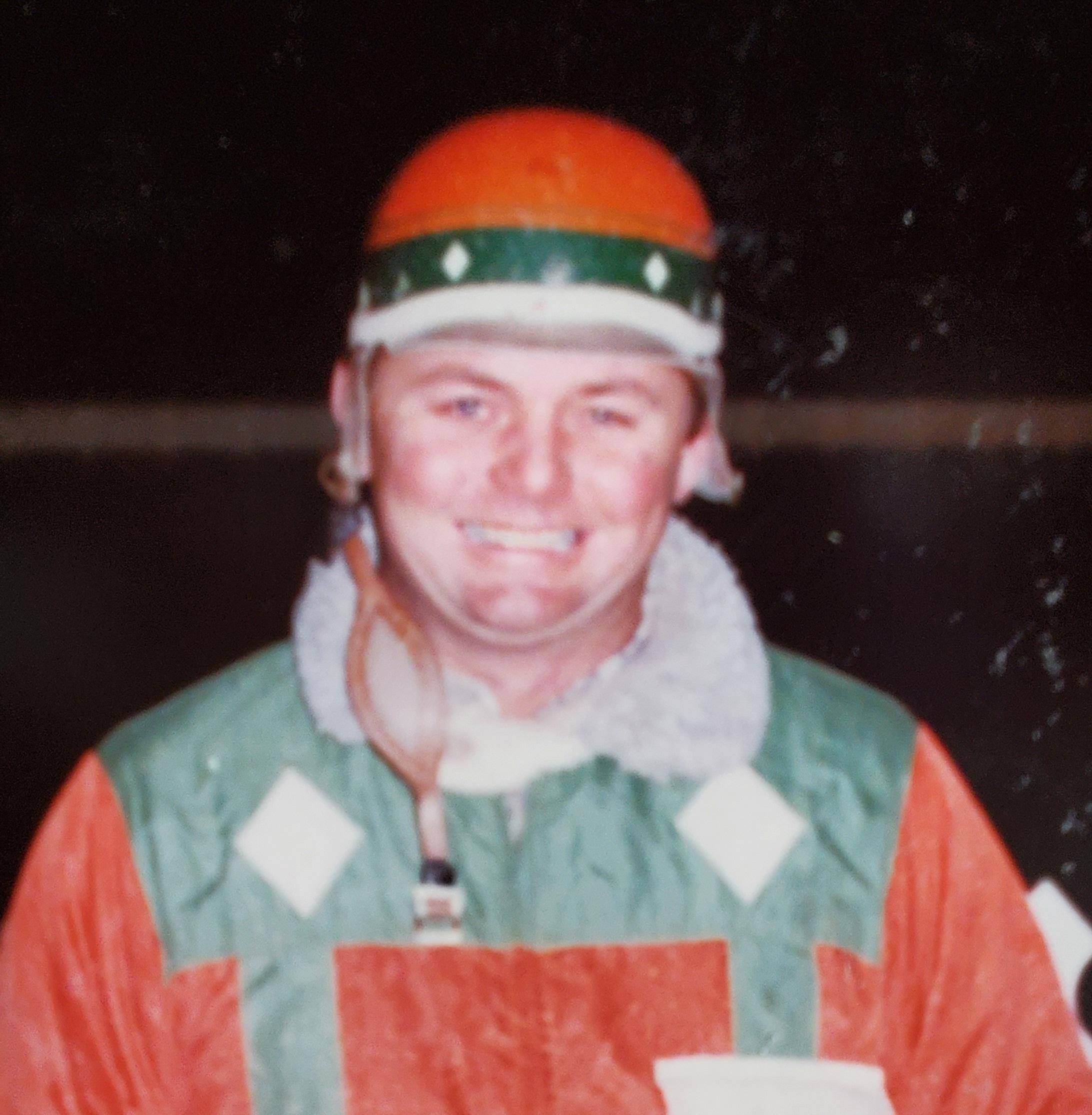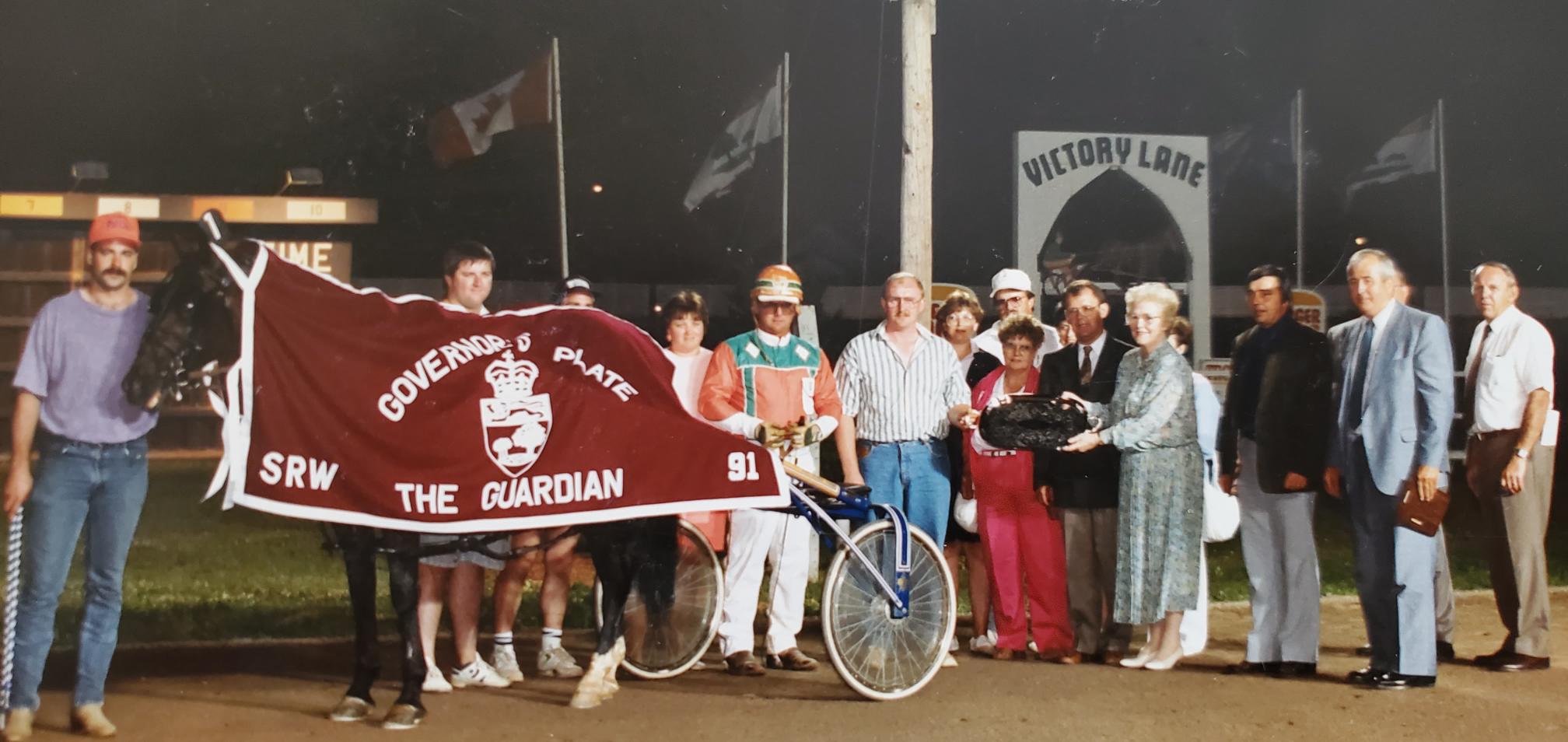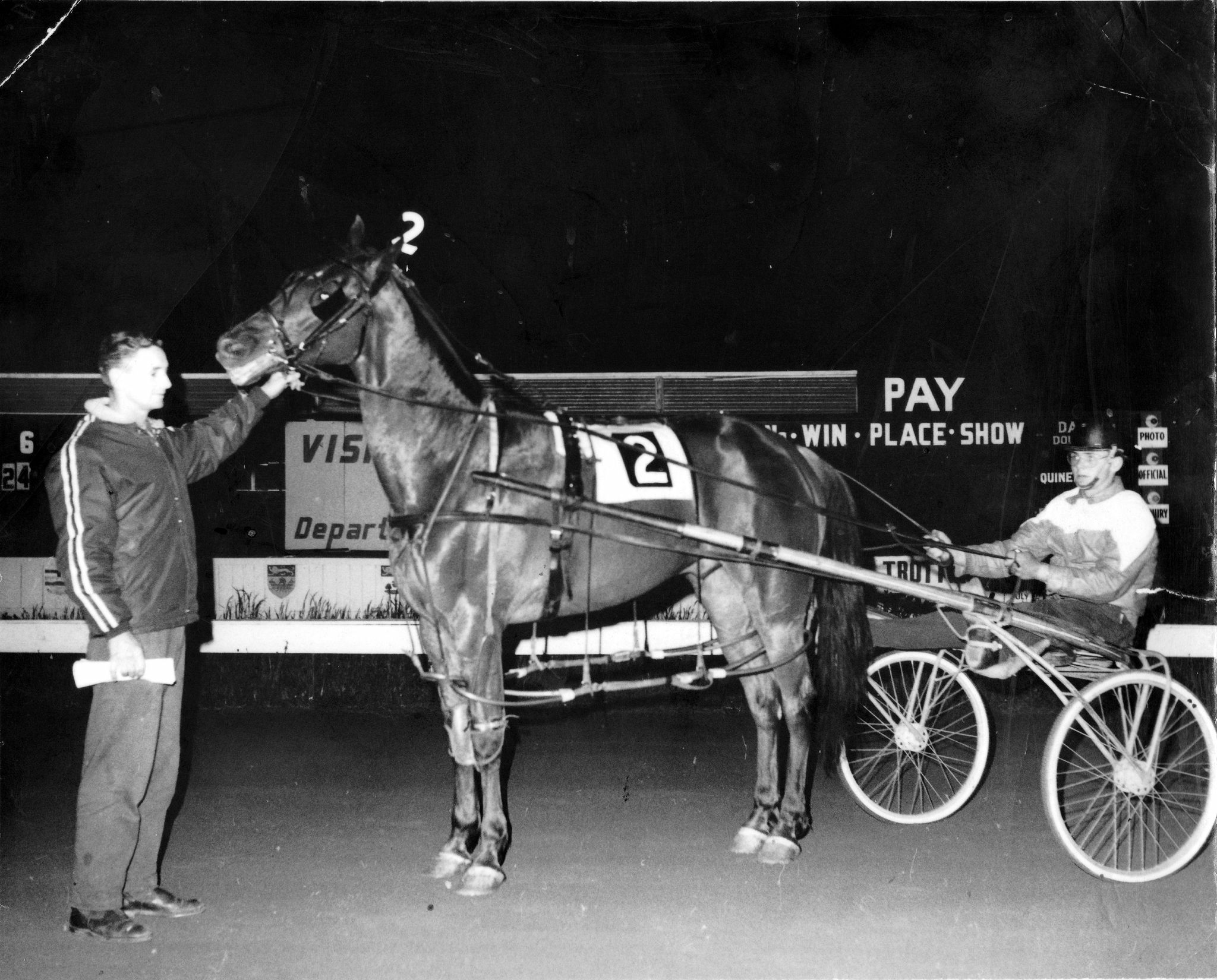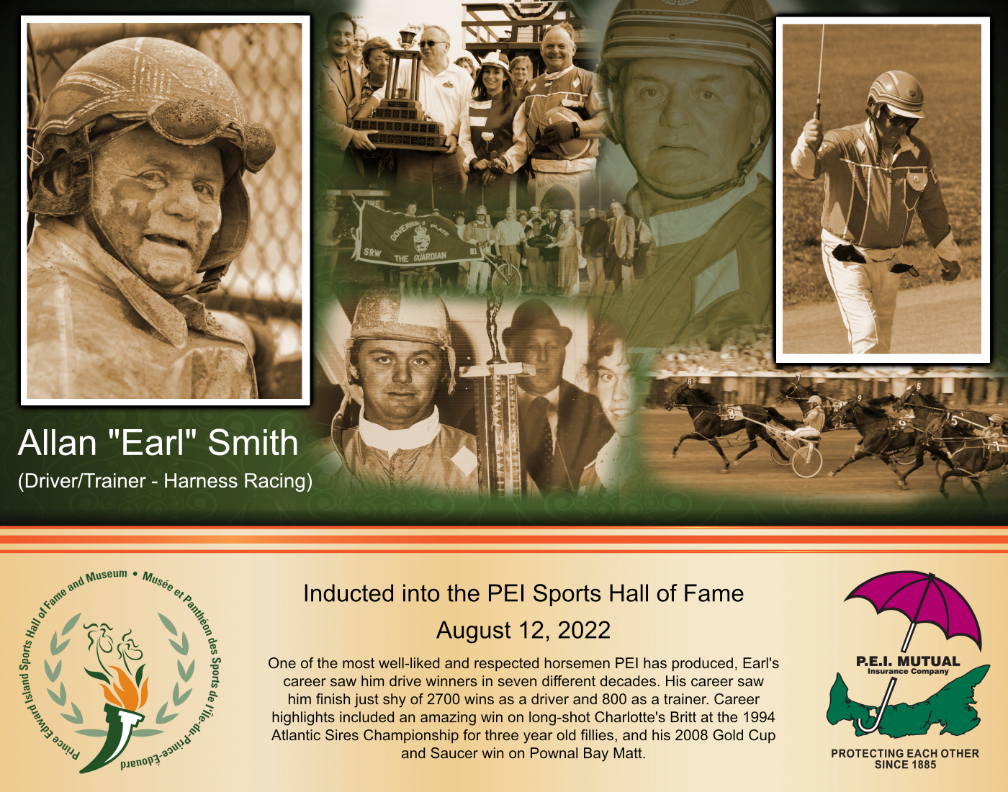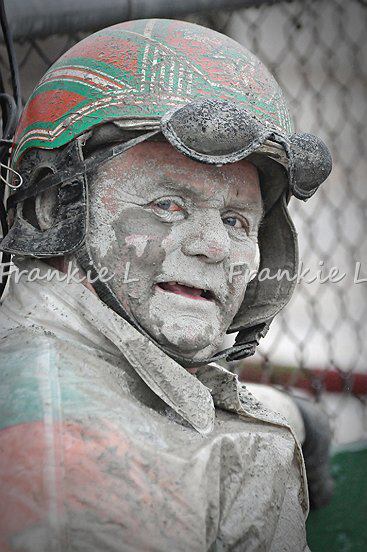Allan “Earl” Smith was born in the horse racing hotbed of Hunter River, PEI on June 28, 1949. His DNA oozes the horse industry. His father, Alan, was descended from a long line of practising blacksmiths, who operated forges in the New Glasgow and Hunter River areas. Earl’s great grandfather, William Smith, operated a blacksmith’s forge in Hunter River (where the Irving station currently stands), from the late 1800s through to the 1920s. Earl’s grandfather, George Earl Smith, was a blacksmith in New Glasgow and Hunter River, from the 1920s through 1955. George Earl also served as the official timer of the ice races in New Glasgow. and at the Charlottetown Driving Park (CDP), from 1955-1965.
Earl’s mother, Wanda Bernard, had 12 siblings, two of who, Emmett and Jack, were deeply involved in the sport of harness racing. Emmett was one of the stronger personalities in the game in the 1950s and 1960s, and would play a pivotal role in Earl’s career.
As many kids in that era grew up playing hockey and baseball, for Earl it was all about the horses, at least that is what his mother said. Like most of Hunter River post World War 2, the Smiths had a couple of horses around, as a hobby. Earl was always at his father’s side or on his knee jogging and training horses on the sides of the rural roads, in central Queen’s County.
Earl left school at the age of 14 and went to work for Jay Edwards at his trail rides in New Glasgow, as tourists began to flock to PEI looking for vacation adventures in the 1960s. He just couldn’t be around horses enough. When he got home from his day job, it was usually right to the barn to help with the handful of racehorses kept at their small Hunter River farm.
When he turned sixteen, Earl went to work for his Uncle Emmett Bernard, one of the first people to operate a public racing stable in PEI. Emmett had some of the best horses in the Maritimes in his stable, both in Hunter River and the CDP. And Earl gained three years learning the ins and outs of the racing game from his uncle Emmett.
Earl opened a public stable at the CDP in 1968 as an 18 year old. He said he was lucky enough to get a few horses to start from some prominent owners at the time; Bobby Campbell, Bob Dawson, and Dr. Preston MacIntyre. He also bought his first horse in partnership with Leo Peters, Dudley’s Ace, for $900. His first official drive came on a horse called Bonny Brook C, where he finished in 4th place. Earl’s first win, of almost 2700 driving victories, came in June 1968 with Garth’s Best in a time of 2:12, at the Summerside Raceway.
He operated his stable in Charlottetown through the 1970s, made up of mainly older-aged horses, at times finding it a challenge to have a lot of success as a younger trainer-driver in the competitive Island harness racing industry.
In the mid-1970s, Earl’s tireless work ethic, and aggressive style on the track caught the attention of prominent Island horse owner Brad Murray, who trusted him to “break” (teach young horses how to race) young U.S bred horses Murray purchased south of the border, horses such as Butler Machine, Adieu Hanover (the best mare in Atlantics Canada in the 1970s and prominent broodmare of many champion racehorses), HH Marauder, Windmill Adios and Cheketa Hanover. With Murray’s support, Earl began to dabble into the “Stakes horses,” which were the 2 and 3 year old, colts and fillies. The Stakes races offered more purse money.
Brackley’s Ada gave Earl his first Stakes race win in 1974. He began to be recognized by many as an up and coming young talent. In 1976 Earl captured the McDonald’s Maritime Driving Championship held at the CDP.
With the CDP closed for the winters during the 1970s and 1980s, and the SRW racing for poor purse money at the time (to paraphrase Earl), he decided to set up a winter stable at Exhibition Park Raceway (EPR) in Saint John, NB. He raced 6-10, overnighters and aged horses at EPR, while training the younger ones at the CDP. He traveled back and forth for the Wednesday night and Saturday racing. He operated this stable for three winter seasons gaining lots of experience and respect in the sport.
Earl would lead the CDP in driving victories in 1979 and 1980, and was amongst the leading drivers at EPR as well.
In the winter of 1980-81, he decided to go where the better money was and took 10 horses to Flamboro Downs in Dundas, Ontario. It was a successful winter, as he finished in the top 10 in driver standings for the winter meet.
He came back east for the summer months, where he led the CDP in driving wins and captured the 1981 Maritime Driving Championship at Sackville Downs in Nova Scotia. The sport began to see more and more stakes race victories out of the Smith barn.
In the winter of 1981-82, Earl operated a winter racing stable out of Hippodrome Blue Bonnets in Montreal. He returned home again in the spring to once more win the Maritime Driving Championship that summer. He also added a number of Atlantic Sire Stakes wins, mainly with Bayside Katfish, who was trained by Earl’s father, Alan.
With a young family at home in Hunter River, Earl decided to remain closer to home in the winter months. Sackville Downs, outside Halifax, was racing for big purses in the winters, so he opened a stable there for the next three winter racing seasons, until it closed in 1986. He returned to Blue Bonnets for the winter racing in 1986-87 and 1988-89.
By the mid-80s Earl was having more success with Stakes horses, and had his first Atlantic champion in 1984, with the colt, RE’s Express. Also in 1985, Earl had the veteran 14 year old pacer, Graduate Boy, racing out of his stable. The Stu McClure owned pacer dominated the aged horse claiming ranks in the Maritimes, winning 32 races that year, and being crowned the winningest horse in North America in 1985.
Earl decided in 1988 that the majority of horses in the stable would be 2 and 3 year olds, as they raced for more money, for the countless hours of work put into them, as compared to racing a barn full of claimers and aged horses that often required much more work to keep healthy, and were prone to injury.
For the next four decades, Earl established a reputation the harness racing world, as one of top Stakes race trainer/drivers on the Canadian East Coast. With the Stakes season in the Maritimes being the summer and fall months, it meant winters would focus on training the babies. Since that decision to go all in on the Colt Stakes circuit, the Earl Smith stables have captured every major Stakes race in Atlantic Canada, some on multiple occasions including the Atlantic Sire Stakes, PEI Colt Stakes, Dairy Queen Futurity, Atlantic Breeders Crown, Duck Acorn Stakes, Anne Shirley Stakes, Lady Slipper Stakes, Joe O’Brien Stakes, Ruffin Barrieu Memorial, Francis MacIsaac Memorial Stakes, Williamson memorial, Bill Quigg Stakes, Donnie Turner Memorial, and The Maritimer.
Some highlight victories on the Stakes circuit included:
1986 Overnight Storm, first Maritime bred to pace sub 2:00 mile, Champlain Raceway, Moncton
1987 Isle of Time, first Maritime bred-filly to pace a 2:00 mile
1994 Mountain Swinger – First mare to pace sub two minute mile in the Maritimes
Earl has won four Atlantic Breeders Crown Championships:
2008 Dunmore Laird, 2 year-old Trot Invitational
2008 RE’s Mary, 3 year old pacing filly
2009 RE’s Mary, 3 year old pacing filly
2012 Touch of Lightning, 3 year old pacing colt
Since the creation of the Atlantic Sires Stakes program by the Atlantic Standardbred Breeders Association in 1967, Earl Smith is one of, if not THE, leading trainer and driver in the storied history of the ASS. In 2009, as part of the 75th anniversary, Earl was honoured as the “Top Driver in the History of the PEI Colt Stakes.” (the oldest Stakes program in Canada). Earl has had two horses (Grampy’s Winner & Dunachton Dexter) who have completed the rare feat of earning over $100,000 in Maritime Stakes money, during their 2 and 3 year old stakes careers.
Earl has also developed a number of young horses who have gone on to stakes race success in other parts of Canada and the US, including Arrive at Five which was purchased by Earl as yearling, and after being broken and trained later sold to Ontario interests, where it paced to a record 1:50.4, earning $870,973 while being named USTA top aged pacer and runner-up for Canadian Horse of the Year in 1994. Successes such as these have earned Earl a reputation among industry leaders as a developer of race horses that can compete against some of the sport’s best.
Along with his Stakes successes, Earl has been equally dominant on the prestigious Atlantic Invitational Pace trail, with horses such as Adieu Hanover, Burners Delight, Manilow Hanover, Baker Who, Grampy’s Winner, Paris Dexter, Bub, Mountain Swinger, Winds of Peace, Almahurst Looker, Pownal Bay Matt, Touch of Lightning, winning almost all of the major invitational paces held at the various maritime tracks, including the Bob Dewar Memorial (Summerside), the Alexander Memorial (Saint John), JA Ferguson Memorial (Sydney), on two occasions the Atlantic National Exhibition Pace (Saint John), NS Exhibition Cup (Truro), Governor’s Plate (Summerside), Premier’s Pace (Charlottetown), and most thrilling of all, the 2008 Gold Cup and Saucer at the age of 59.
With almost 2700 carer driving winners, mostly in the Maritimes, Earl Smith is one of the all-time winningest drivers at his long-time base track, the Charlottetown Driving Park (Red Shores). When asked, Earl recalls three races as his most memorable:
a) 1993 Dairy Queen Stakes for three year old fillies. Earl had two horses in the race, Dexter’s Jane & Pillar of Strength. Earl rode Pillar to second place, while Gary MacDonald won on Jane.
b) 1994 Atlantic Sires Championship for three year old fillies. Known as the “Miracle at the CDP” – “Charlotte’s Britt was a nice horse but was sick a lot at three. She did not have enough points to make the championship race, but was allowed in after two other horses pulled out. She was the longest shot in the race, but was on her game that day and raced really tough and went on to win the race, and we were able to help out young Jeffery Bowman by donating the purse money ($9,000) to help his family.” The race gained a lot of media attention, and Earl and Tom MacPherson were awarded the Dan Patch Award in Las Vegas in 1995 for the best story in horse racing.
c) 2008 Gold Cup and Saucer (the first time the Gold Cup was held on a Sunday afternoon due to torrential rain on the Saturday night). On Pownal Bay Matt, Earl had to overcome the #8 post-position, but held his ground until the stretch when he flew through, to give Earl his deserved Gold Cup and Saucer win.
With a driving victory on February 1, 2020 at Red Shores, Earl became one of only two known harness racing drivers in the history of the sport to have had driving victories over the span of seven decades, the other being Horse Racing Hall of Famer Delvin Miller.
Notable stats for Earl Smith (as of May 2021)
14,879 starts
2,682 wins
$4.5 million in winnings
5 Gold Cup and Saucer appearances
One of 12 drivers to win a Governor’s Plate and Gold Cup and Saucer
PEI Standardbred Horse Owners Association Trainer of the Year – 1991, 1992, 1993, 1998, 2004
Earl Smith was inducted into the PEI Sports Hall of Fame by his son, Mike Smith, on August 12, 2022. Sadly, Earl passed away just two weeks before he was due to be inducted into the Hall, on July 26. He was extremely honoured and excited to be receiving the honour.

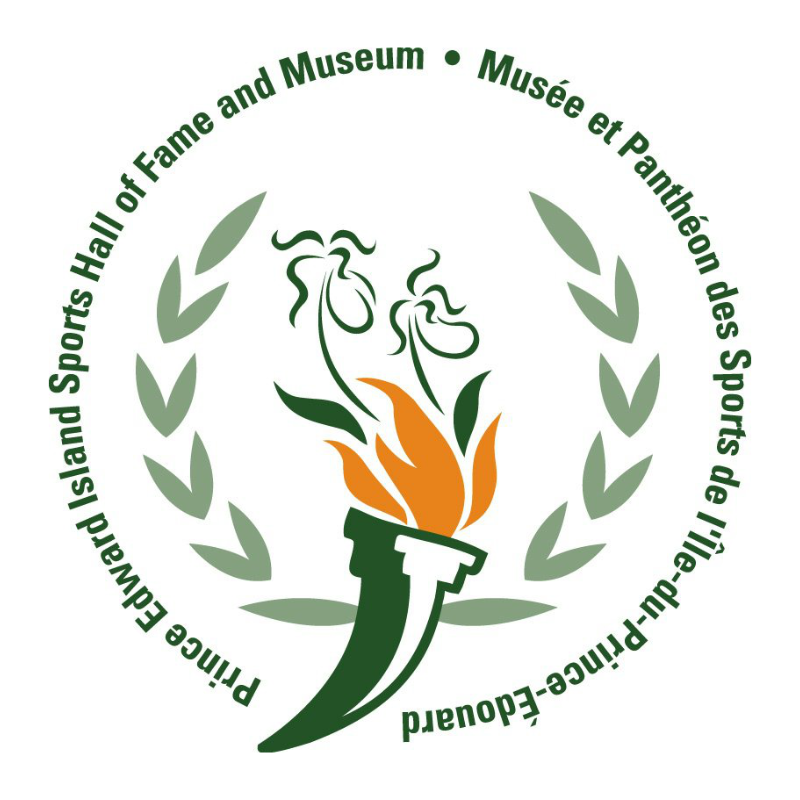

![Earl_Smith1[1]](https://peisportshalloffame.ca/wp-content/uploads/2022/10/Earl_Smith11-scaled.jpg)
